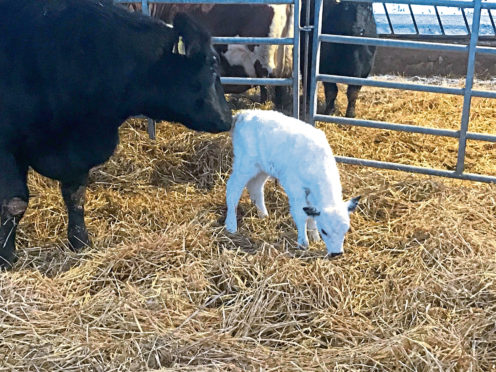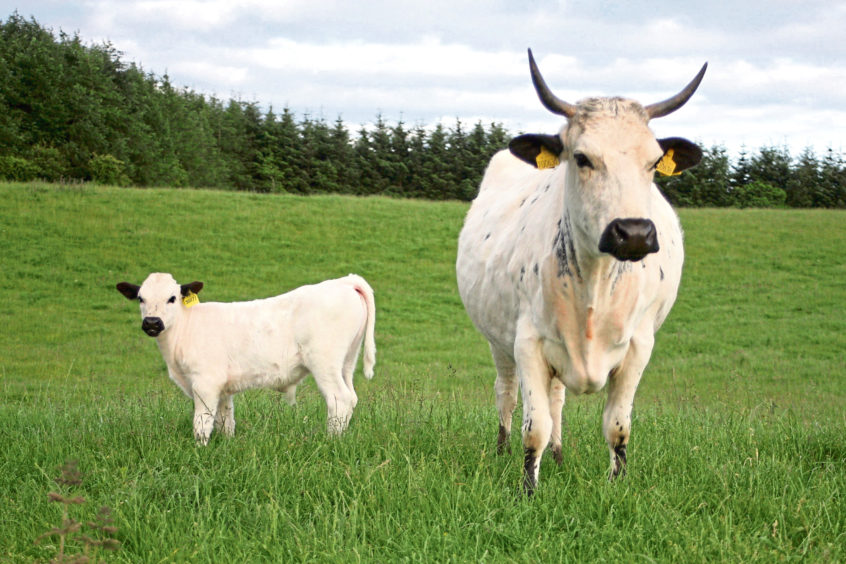The successful birth of a Vaynol heifer calf through embryo transfer (ET) has boosted efforts to save one of the UK’s rarest native cattle breeds, conservationists say.
The calf, called Snow due to her white colouring and the conditions at the time of her birth near Edinburgh on January 6, was born through the first successful ET for a semi-wild cattle breed.
Vaynol cattle are descended from ancient herds of white cattle brought to Britain when it was still connected to Europe by land.
The Vaynol breed was established at Vaynol Park near Bangor in 1872, and is one of just two native semi-feral or feral breeds in the UK, living in fenced areas but able to exhibit natural herd behaviour.
They are one of five cattle breeds whose situation is listed as critical on the Rare Breeds Survival Trust (RBST) watchlist, with just 23 breeding females counted in 2019 across five herds.
Conserving rare native breeds is as much a part of protecting the UK’s biodiversity as saving wild animals, the RBST’s chief executive Christopher Price said.
Vaynol embryos using in vitro (IV) embryo production techniques were implanted in recipient Aberdeen-Angus cows in a project by the RBST and animal breeding specialists AB Europe.
The method has saved the genetic line of Snow’s mother who had struggled to reproduce, and the birth of a second calf from the same project is expected this summer.
Mr Price said: “Snow’s birth really is momentous for the Vaynol breed, which is among our very rarest native cattle.”
He said Vaynol declined in the face of small numbers, modest fertility and a shift towards faster-growing, bigger cattle. But primitive native breeds could make a comeback.
“Consumers are getting more concerned about welfare and where their food comes from, the environmental footprint of their meat, and so many native breeds provide the answer to that,” said Mr Price.
“They were bred to thrive on grass without lots of artificial feed. So we can see them coming back but they’ve got to survive to do that, which is why what has happened with this Vaynol breed is so important.”
AB Europe vet Gavin Tait said: “Persistence paid off with the birth of Snow following several previous implant efforts which failed to hold.
“Snow was born on a -6C January night, we gave her extra colostrum and kept checking her but she did very well and continues to thrive.”
The calf will remain with her surrogate mother for the time being and a decision will be made as to whether to reintroduce her to an existing Vaynol herd or to establish a new herd.

